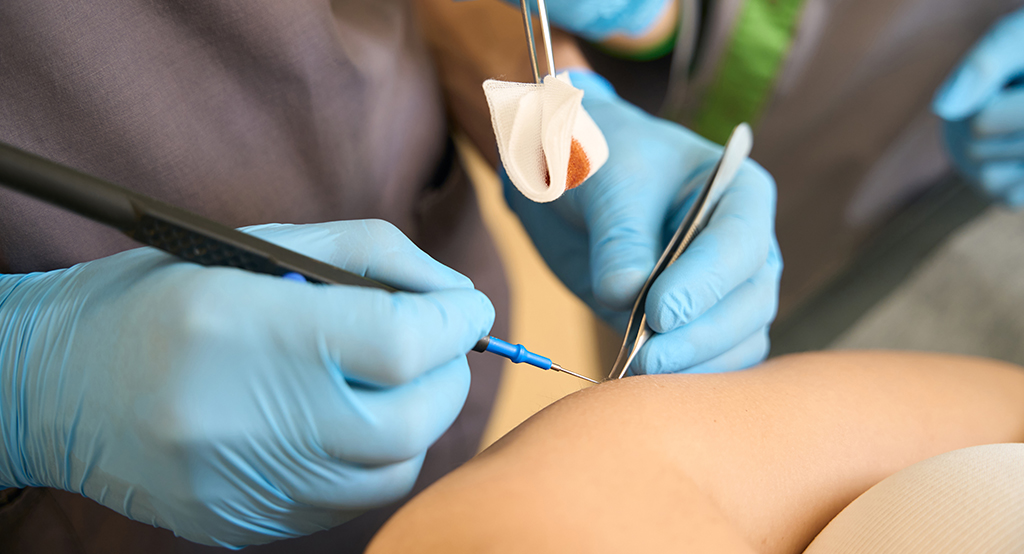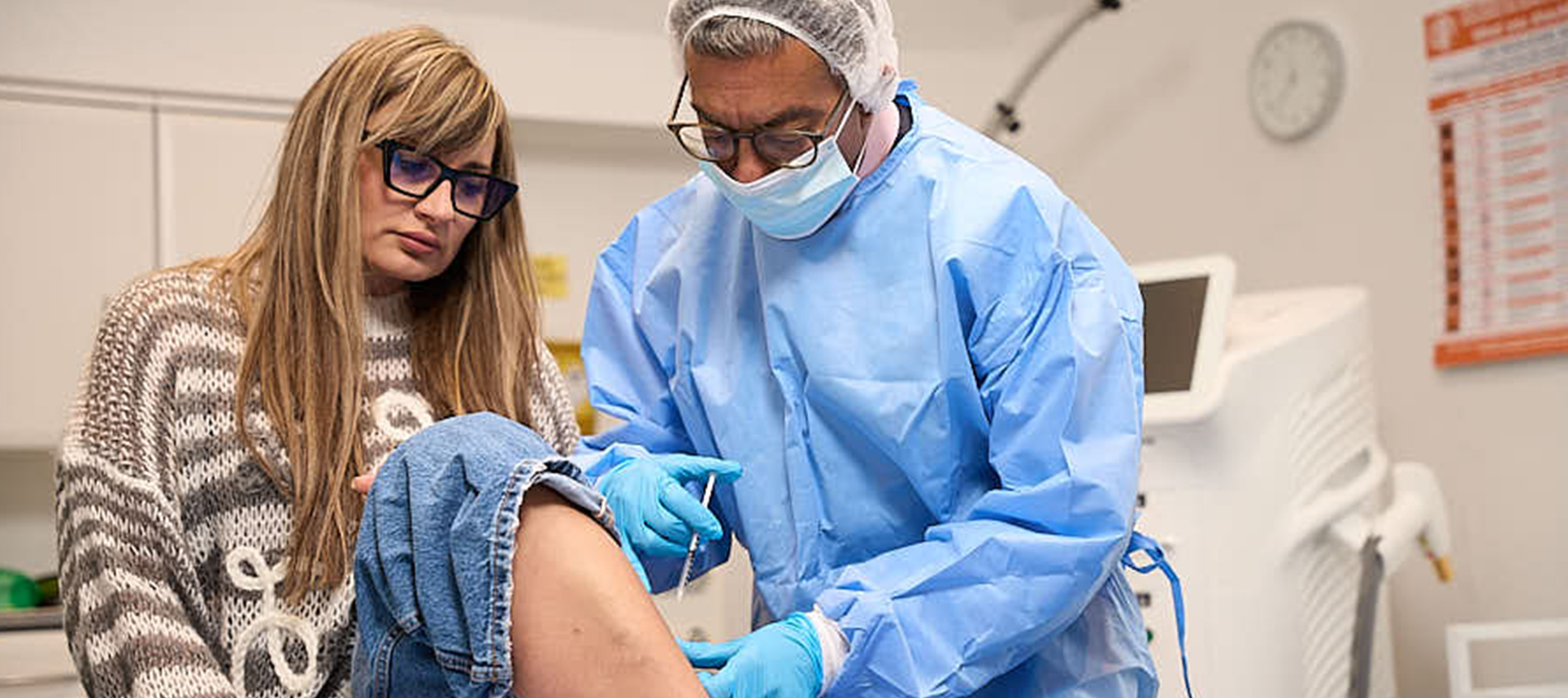If you’re thinking about seeing a surgical dermatologist, chances are you’ve got a lot of questions—and rightly so. Whether it’s a skin cancer removal or a cosmetic procedure, surgery on the skin isn’t something to take lightly. To help put your mind at ease, I’ve pulled together the 17 most common questions people tend to ask surgical dermatologists. So, let’s break it down together—no jargon, no fluff, just straightforward answers.
1. What exactly does a surgical dermatologist do?
A surgical dermatologist is a specialist who’s trained to carry out procedures on the skin. Their job can range from removing skin cancers and cysts to performing cosmetic enhancements like mole removal or scar revision. Think of them as the go-to professionals when something on your skin needs more than just creams or medication.
They’re trained as general dermatologists first, and then they go through extra years of surgical training. That means they understand both the medical and technical sides of skin care. This is important, because operating on the skin isn’t just about removing something—it’s about how it heals, how it looks afterwards, and whether there’s any risk of recurrence.
They often work closely with pathologists, especially when dealing with skin cancers. During some procedures—like Mohs surgery—they’ll examine the tissue under a microscope while you’re still in the clinic, to make sure all the cancerous cells are gone. It’s precise work.
So, whether it’s a functional issue or a cosmetic concern, surgical dermatologists are experts in safely and effectively managing things that need to be cut out, stitched up, or reshaped.
2. When should I see a surgical dermatologist instead of a regular dermatologist?
If you’ve got a skin issue that might require cutting, stitching, or any form of procedure beyond creams and medications, that’s when a surgical dermatologist becomes relevant. While a general dermatologist might diagnose your condition and offer initial treatment, they’ll usually refer you to a surgical colleague if it looks like a procedure is needed.
For instance, if you’ve got a suspicious mole or lesion that could be skin cancer, or if a lump like a cyst is getting bigger or painful, that’s often a surgical case. Similarly, if you’re looking for cosmetic mole removal or something like a keloid scar that needs revision, a surgical dermatologist is the right person to consult.
They also come into play when you need a more precise technique or a higher level of cosmetic skill. Take Mohs surgery for skin cancer, for example—it’s very meticulous and usually done by a specially trained surgical dermatologist. The benefit? Less damage to healthy skin and a better aesthetic outcome.
It’s not always about urgency, either. Sometimes you just want peace of mind. If you’re unsure whether something needs removing, it’s worth asking your general dermatologist if a surgical opinion is appropriate. Better safe than sorry.
3. Is skin surgery painful?
Understandably, pain is one of the top concerns patients have. The good news? Most skin surgeries are performed under local anaesthetic, so you won’t feel pain during the procedure itself. You might feel a tiny pinch from the injection, but once the area is numb, things are usually very comfortable.
After the anaesthetic wears off, some soreness or discomfort is normal—but it’s generally mild. Most people describe it more as a ‘tight’ or ‘bruised’ feeling than outright pain. Over-the-counter painkillers like paracetamol or ibuprofen are usually enough to manage it.
The level of discomfort can depend on the area of the body, the size of the wound, and how much movement the site gets during healing. For example, procedures on the back or joints might feel more noticeable simply because of stretching and bending.
It’s worth mentioning that surgical dermatologists are really good at minimising trauma to the skin. Smaller wounds, cleaner cuts, and careful stitching all help with comfort and quicker recovery. So, while no surgery is ever completely pain-free, it’s far more manageable than most people expect.

4. Will I be left with a scar?
Any time the skin is cut, there’s always going to be a scar—it’s just how our bodies heal. But surgical dermatologists are trained to keep scarring to a minimum. They’re very conscious of both function and appearance, which means they’ll do everything they can to place incisions carefully and stitch the skin in a way that heals neatly.
The final scar depends on a few factors. First is your skin type—some people are naturally prone to thicker or raised scars. Then there’s the size and depth of the removal, and how well you look after the wound during the healing process. Keeping the area clean and protected can make a big difference.
There are also scar treatments available after the wound has healed, like silicone gels, laser therapy, or steroid injections if necessary. These can really help refine the look of the scar, especially if it’s on a visible area like the face or hands.
The key is to have realistic expectations. While you’ll likely have a mark of some sort, most people find it fades significantly over time—and in many cases, it’s barely noticeable.
5. How do I prepare for skin surgery?
Preparation can make all the difference in how smoothly your procedure goes. First and foremost, follow the instructions your dermatologist gives you. This might include avoiding certain medications like blood thinners or anti-inflammatories for a few days beforehand—these can increase bleeding during the surgery. You may also be advised to skip alcohol and smoking, as both can affect healing.
You should also plan your day around the procedure. Even though it’s usually done under local anaesthetic, you might want someone to drive you home afterwards, especially if the surgery is on your face or near your eyes. Wear loose, comfortable clothing and avoid makeup, creams, or lotions near the area being treated.
On the day of the surgery, try to arrive calm and well-rested. Bring any paperwork, medications, or allergy information with you. If you’re anxious, don’t hesitate to mention it—surgical dermatologists are used to nervous patients and will take the time to explain everything clearly.
Finally, make sure your schedule allows for some downtime afterwards. Even small surgeries need proper aftercare and healing time. It’s always better to give your skin the best chance to recover without rushing back to work or strenuous activity too soon.
6. What is Mohs surgery, and when is it used?
Mohs surgery is a highly specialised technique used to treat certain types of skin cancer, especially those on the face or other cosmetically sensitive areas. It involves removing the cancer layer by layer, examining each one under a microscope until no cancer cells remain. This allows the surgeon to remove as little healthy tissue as possible while ensuring the cancer is completely gone.
It’s most commonly used for basal cell carcinomas and squamous cell carcinomas, particularly those that are large, aggressive, or have unclear borders. Mohs is also the preferred method when preserving appearance and function is crucial—like around the eyes, nose, lips, or ears.
The procedure can take a few hours, as each layer has to be examined before moving on. But it has one of the highest cure rates of any skin cancer treatment—up to 99% for certain cases. That’s because the entire margin of the tissue is checked in real time.
If your dermatologist recommends Mohs surgery, it’s usually because it offers the best balance between complete cancer removal and preserving your appearance. It’s precise, effective, and done by surgical dermatologists with specific training in this method.
7. How long does it take to heal after skin surgery?
Healing times vary depending on the type and size of the surgery, as well as where it’s located on your body. For small procedures like mole removals, you’re usually looking at about 1 to 2 weeks before things settle down. For larger or deeper surgeries—like those involving stitches or skin grafts—it can take a bit longer.
The first stage of healing involves closing the wound and forming a scab. After about a week, the outer skin is usually strong enough for stitches to be removed. But beneath the surface, healing continues for weeks or even months as the skin knits back together.
You’ll likely be given a wound care plan, which may include cleaning the area, applying ointment, and covering it with a dressing. Sticking to this plan is really important—it helps prevent infection and promotes better scarring.
Long-term, most scars will soften and fade significantly within 6 to 12 months. Things like massage, silicone sheets, and sun protection can help improve the final appearance. Your dermatologist will guide you through each phase, so you’ll always know what to expect.

8. What are the risks of skin surgery?
While skin surgery is generally very safe, it’s not completely risk-free. The most common issues are minor ones—like bleeding, bruising, or mild discomfort. These are usually temporary and managed easily with simple aftercare.
There’s also a small risk of infection. That’s why wound care is so important after the procedure. Your dermatologist might prescribe antibiotics if there’s any concern, especially if you’re prone to infections or the wound is in a high-risk area.
Scarring is another consideration, as we mentioned earlier. Most scars are subtle, but occasionally people develop raised (hypertrophic) or thickened (keloid) scars. If you’ve had issues with scarring before, definitely mention it at your consultation.
In very rare cases, more complex problems can arise—like nerve damage or delayed healing. But with a skilled surgical dermatologist and proper planning, these are extremely uncommon. The key is to discuss everything honestly beforehand, so your dermatologist can tailor the procedure to minimise any risks.
9. What types of skin cancer do surgical dermatologists treat?
Surgical dermatologists commonly treat the three main types of skin cancer: basal cell carcinoma (BCC), squamous cell carcinoma (SCC), and melanoma. Each one behaves differently and requires a slightly different approach, which is why an accurate diagnosis is so important.
Basal cell carcinoma is the most common and also the least aggressive. It tends to grow slowly and rarely spreads to other parts of the body, but it can cause local damage if left untreated. Surgery is often the first line of treatment and usually results in a full cure.
Squamous cell carcinoma is a bit more serious. It grows faster and has a higher risk of spreading, especially if it’s on the lips, ears, or in people with weakened immune systems. Again, surgery is typically very effective, especially if caught early.
Melanoma is the most dangerous form and needs to be treated promptly and thoroughly. Surgical dermatologists are trained to remove melanomas with appropriate margins and often work alongside oncologists if further treatment is needed. Catching any skin cancer early makes all the difference.
10. Can skin surgery be done for cosmetic reasons?
Absolutely. Surgical dermatologists don’t just remove things that are dangerous—they can also remove or revise things you simply don’t like. Cosmetic skin surgery includes mole removal, skin tag removal, cyst excision, and scar revision, among others.
Many people choose to have harmless moles or skin lesions removed because of where they’re located—like on the face or neck. It might be about confidence, irritation from clothing, or just wanting a cleaner look. Whatever the reason, cosmetic surgery can often be done quickly and with minimal scarring.
Scar revision is another common cosmetic procedure. If you’ve got an old scar that healed poorly, a surgical dermatologist can often improve its appearance using advanced techniques. While the scar won’t vanish completely, it can be made flatter, smoother, and less noticeable.
Do bear in mind that cosmetic procedures aren’t usually covered by the NHS, so you’ll need to go private. Still, it’s worth it to see a dermatologist with surgical training—you’ll get medical-grade expertise with an artistic eye.

11. Are all skin lumps and bumps cancerous?
Not at all. In fact, most skin lumps and bumps turn out to be harmless. Things like sebaceous cysts, lipomas (fatty lumps), dermatofibromas, and benign moles are all quite common and usually nothing to worry about. But because they can sometimes resemble more serious conditions, it’s always a good idea to have them checked.
A surgical dermatologist will assess the lump’s size, shape, colour, and how it feels under the skin. In some cases, they might recommend removing it for further analysis, especially if it’s changing or causing discomfort. It’s not necessarily a sign of cancer—it’s just a precaution.
If the bump turns out to be harmless but annoying or cosmetically bothersome, you can usually have it removed easily. These are quick outpatient procedures done under local anaesthetic, with minimal downtime. People often say they wish they’d done it sooner.
The key takeaway is: don’t panic, but don’t ignore it either. It’s better to be cautious and let a professional decide whether anything needs to be done. That peace of mind is worth it.
12. Will I need stitches after my procedure?
That depends entirely on the type of surgery and how big the excision is. Small lesions might be removed using a technique that doesn’t require stitches at all, such as shave excision or cautery. But anything deeper or more substantial usually does need stitching.
Surgical dermatologists are very deliberate about how they close a wound. They use fine sutures and specific stitching techniques that promote clean healing and minimal scarring. Sometimes, dissolvable stitches are used under the skin, while visible stitches might need to be removed about a week later.
In some cases, especially on areas with lots of movement—like joints or the face—they may use layered suturing. That means there’s support from the inside out, which helps the skin heal more securely. It’s not just about closing a wound—it’s about doing it in a way that leads to the best cosmetic and functional result.
If stitches are used, you’ll get full aftercare instructions: how to clean the site, whether to keep it covered, and when to come back for removal if needed. It’s usually a very straightforward part of the process.

13. Can I go back to work the same day?
Sometimes yes, sometimes no—it depends on the complexity and location of your surgery, as well as the type of work you do. If it’s a small procedure done on a part of the body that isn’t easily irritated, you may well be fine to go back to work the same day or the day after.
However, if the procedure involves a larger area, stitches, or is in a place that gets a lot of movement—like your back, arms, or around the eyes—it’s often better to take at least a day or two off. The last thing you want is to pull at the wound or interfere with healing by being too active too soon.
If your job is physical, involves a lot of bending, or takes place in an unhygienic environment, your dermatologist may advise a longer break. Similarly, if you work in front of the public and the surgery is on your face, you might prefer a bit of time for the swelling or redness to go down.
When in doubt, ask your dermatologist during the consultation. They can give a more specific answer based on the exact procedure and your lifestyle. It’s all about balance—healing well now means fewer problems later.
14. Can skin cancers come back after surgery?
Yes, it’s possible—but it’s much less likely if the cancer was completely removed with clear margins. That’s why techniques like Mohs surgery are so effective; they check the tissue thoroughly to ensure no cancer cells are left behind. If it does come back, it’s often in the same area, so close monitoring is important.
Recurrence risk varies depending on the type of cancer, the location, and whether you’ve had it before. Basal cell carcinomas tend to come back in the same spot if not fully treated, while melanomas might recur locally or spread elsewhere. That’s why follow-up appointments are essential.
Even if the surgery is 100% successful, you may still be at higher risk of developing new skin cancers in future. That’s especially true if you’ve had multiple sunburns, use sunbeds, or have a family history of skin cancer. Protecting your skin from UV damage going forward is key.
Your dermatologist will likely recommend regular check-ups to keep an eye on things. They’ll also show you how to examine your own skin for changes. The earlier a recurrence or new lesion is caught, the easier it is to treat.
15. Are there alternatives to surgery for skin issues?
Yes, but it depends on the condition. Not every skin issue needs surgery—some can be treated with creams, cryotherapy (freezing), laser treatments, or photodynamic therapy. For instance, early-stage actinic keratoses can often be managed without cutting anything out.
However, when it comes to certain skin cancers or growths that are deep or irregular, surgery remains the most reliable option. It offers the clearest margins and the lowest recurrence rates. Non-surgical methods might be used for very superficial cancers, but they’re not suitable for all types.
For cosmetic issues, like milia or skin tags, your dermatologist might recommend laser or cautery treatments instead of excision. These are often quicker and leave less scarring, but not every patient is a good candidate for them. That’s where a proper assessment comes in.
So while surgery isn’t always necessary, it’s often the most definitive option. A surgical dermatologist will weigh up the pros and cons and help you decide on the best course of action for your particular case.
16. How do I choose the right surgical dermatologist?
Start by checking qualifications. In the UK, make sure your dermatologist is on the GMC Specialist Register in dermatology and ideally a member of the British Association of Dermatologists (BAD). If you’re considering private care, look for someone who regularly performs skin surgery and is happy to show before-and-after photos of their work.
Word of mouth is also incredibly helpful. Ask your GP, friends, or family if they’ve had a good experience. Online reviews can be a guide, too—but take them with a pinch of salt and focus on consistent themes rather than one-off comments.
When you have your consultation, pay attention to how the dermatologist communicates. Are they clear and patient with your questions? Do they explain the risks and aftercare thoroughly? These are good signs that you’re in safe hands.
Lastly, make sure you feel comfortable. Trusting your surgical dermatologist is just as important as their credentials. If something doesn’t feel right or you’re unsure, it’s perfectly fine to get a second opinion before proceeding.
17. What’s the difference between a plastic surgeon and a surgical dermatologist?

Both perform procedures on the skin, but their training and focus are quite different. A plastic surgeon typically deals with a wide range of surgeries, including trauma, breast reconstruction, burns, and facial surgery. They’re trained to work on many parts of the body, often involving deeper tissues, not just the skin.
Surgical dermatologists, on the other hand, specialise purely in the skin. They know skin cancers, moles, cysts, and other lesions inside and out. Their training focuses on how skin behaves, heals, and responds to different techniques. This makes them ideal for treating superficial conditions with precision and minimal scarring.
In many cases, patients confuse the two, especially when looking for cosmetic mole removal or scar revision. But if it’s a skin-specific issue, particularly something suspicious or potentially cancerous, a surgical dermatologist is usually the better first point of contact.
That said, there are situations where the two specialists work together. For example, if a large cancer requires skin reconstruction or if the location is particularly sensitive, a plastic surgeon might get involved to assist with the cosmetic result. It all depends on the case.
Final Thoughts
Choosing to have surgery on your skin—whether for medical or cosmetic reasons—is a big decision, and it’s completely natural to have questions. Hopefully, this guide has helped shed some light on what surgical dermatologists do and what you can expect before, during, and after a procedure. It’s all about getting the right information so you can make choices that feel right for you.
One of the best things about seeing a surgical dermatologist is that you’re not just getting someone who knows how to operate—you’re getting someone who truly understands the skin inside and out. That means better planning, better outcomes, and fewer surprises along the way.
If there’s one takeaway from all this, it’s this: don’t be afraid to ask questions. A good surgical dermatologist will welcome your curiosity and help you feel confident and informed every step of the way. No question is ever too small.
So, whether you’re dealing with something worrying or just want something removed for peace of mind, know that you’ve got options—and expert help is only a consultation away. You can contact us at the London Dermatology Centre if you’d like to book a consultation with one of our expert surgical dermatologists.
